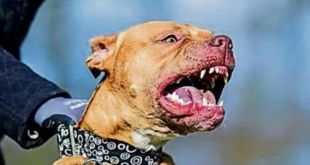As freezing temperatures and winter storms grip vast parts of the United States, caring for your pets becomes a paramount concern.
Walking your dog, letting your cats roam outdoors, or ensuring the well-being of larger animals like horses, cows, and chickens requires special attention in such harsh weather conditions.
Veterinarians offer valuable advice on protecting and caring for your beloved animals during this Arctic blast.
Dr. Rena Carlson, President of the American Veterinary Medical Association, emphasizes the importance of preparation in extreme weather events. Seeking advice from your veterinarian is key, as they possess the medical history necessary to guide you on how well your pet can tolerate the cold.
Livestock owners are advised to ensure easy access to feed and unfrozen water, which is crucial for keeping animals hydrated and fueled to endure freezing temperatures.
But how cold is too cold to take your dog for a walk? Dr. Wasi Ashraf, Medical Director at VEG Williamsburg in Brooklyn, suggests that it depends on various factors such as breed, size, body condition, hair coat, and pre-existing conditions.
Generally, concerns arise when temperatures drop below freezing, around 32 degrees Fahrenheit. Dr. Ashraf recommends limiting outdoor time for dogs, especially in temperatures below 20 degrees Fahrenheit and suggests considering protective measures like winter jackets and booties.
For outdoor cats, the ability to withstand the cold is influenced by breed, size, and hair coat. Dr. Ashraf notes that outdoor cats are susceptible to hypothermia and frostbite, urging owners to provide adequate shelter or enclosure to protect them.
Feral cats may seek warmth under porches or in basements, emphasizing the need for accessible shelters and non-frozen water sources.
Regarding larger animals like horses and cows, Dr. Carlson highlights the importance of providing shelter to ensure easy access to food and water.
While these animals can acclimate their metabolism to colder temperatures, proper nutrition and water sources are essential for their survival in extremely cold conditions.
In the case of smaller birds, such as chickens and ducks, Dr. Carlson recommends providing a heat source in the coop during bitter cold temperatures.
Recognizing that the size of the animals plays a significant role, she emphasizes the need to introduce heat sources safely to protect these feathered friends from the chilling weather.
As the winter chill persists, being informed and proactive in safeguarding your pets against the cold is crucial. Consultation with your veterinarian and implementing protective measures can make a significant difference in ensuring the well-being of your furry and feathered companions during this frosty season.
 DogExpress
DogExpress


















 in Chandigarh, India.
in Chandigarh, India. 

